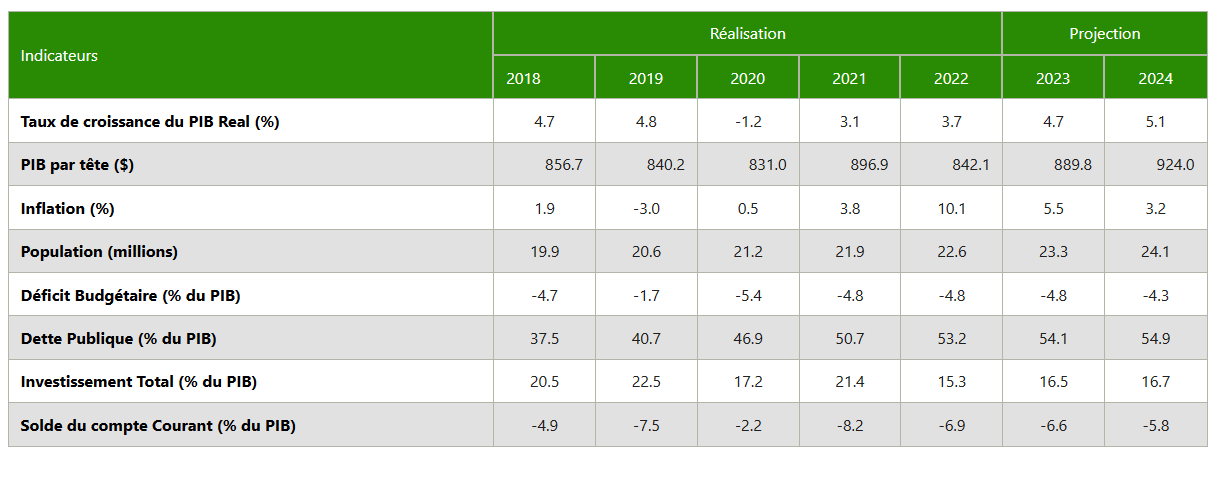
Macroeconomic Performance
Table 1: Overview of some macroeconomic indicators
 Mali recorded an average growth rate of 3 per cent over the last five years. Mali’s economy has been hampered by the economic sanctions imposed by ECOWAS. However, the economy grew by 3.7 per cent in 2022, up from 3.1 per cent in 2021. The growth was supported by a healthy growth in agriculture (even though cotton production declined as a result of parasite infestations) and services. Average inflation spiked to 10.1 per cent, up from 3.8 per cent in 2021, in line with global trends. Fiscal balance stabilised at -4.8 per cent of GDP, while debt increased to 53.2 per cent of GDP from 50.7 per cent of GDP in 2021. The current account balance worsened to -6.9 per cent of GDP in 2022, up from -8.2 per cent of GDP in 2021.
Mali recorded an average growth rate of 3 per cent over the last five years. Mali’s economy has been hampered by the economic sanctions imposed by ECOWAS. However, the economy grew by 3.7 per cent in 2022, up from 3.1 per cent in 2021. The growth was supported by a healthy growth in agriculture (even though cotton production declined as a result of parasite infestations) and services. Average inflation spiked to 10.1 per cent, up from 3.8 per cent in 2021, in line with global trends. Fiscal balance stabilised at -4.8 per cent of GDP, while debt increased to 53.2 per cent of GDP from 50.7 per cent of GDP in 2021. The current account balance worsened to -6.9 per cent of GDP in 2022, up from -8.2 per cent of GDP in 2021.
Outlook
Mali’s economy is expected to be driven by the agriculture and services sectors in the short-to-medium-term, with growth reaching 4.7 per cent in 2023 and further to 5.1 per cent in 2024. Average inflation is projected to ease to 5.5 per cent in 2023 and further 3.2 per cent in 2024. Fiscal balance is projected to remain at -4.8 per cent of GDP in 2023 and narrow to -4.3 per cent of GDP in 2024. Debt-to-GDP is projected to increase marginally to 54.1 per cent of GDP in 2023 and 54.9 per cent of GDP in 2024, while the current account balance narrows to -6.6 per cent of GDP in 2023 and -5.8 per cent of GDP in 2024.
Probable Headwinds
Insecurity remains Mali’s biggest challenge, with the rebels controlling large swathes of land and making occasional incursions into areas they do not control. This remains a threat to food security and overall macroeconomic stability. The pests that attacked cotton seeds in 2022 still loom large. If not controlled, cotton production will be undermined further in 2023 and 2024. Inflation remains a threat to Mali’s economy. A return to the levels of 2022 will push more people into poverty.

